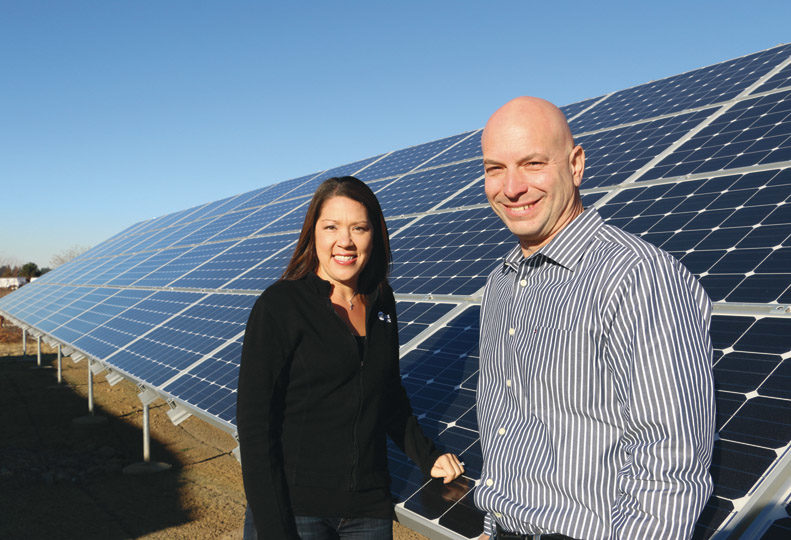
Home » Inland Power rolls out new solar panel array
Inland Power rolls out new solar panel array
Second community project phase already in the works

November 20, 2014
Spokane-based electric cooperative Inland Power & Light Co. has built a solar panel array, launched its new Community Solar program, and is preparing to build a second solar panel array, says John Francisco, its chief of energy resources.
The program enables co-op members to use solar energy at a much lower cost than installing an individual unit at a home or business, Francisco says.
“Solar has a pretty high up-front capital cost, and we wanted to expand the opportunity to those of lower income,” he says.
Francisco says the first solar array began operating in September. The co-op sent out a flyer to members in October, asking if they wanted to sign up to buy units of the array.
Each unit of the array is 56 watts and generates 80 kilowatt-hours annually, and the array has a total of 526 units, Francisco says. A residence that has electric appliances and heat uses about 19,000 kilowatt-hours annually, he says.
“The whole array is enough to power about 2.2 homes for a year,” Francisco says.
The purpose of the array isn’t to power one home at a time, however, he says, but rather to allow as many members as possible to participate in a clean-energy program and receive the incentives.
“It’s really not a need,” he says. “It’s really to take advantage of the incentives and clean energy. It doesn’t generate all that much compared to the entire utility.”
Each unit costs a customer $300 up front, and Inland Power capped the number of units a member could purchase at 10, Francisco says. Customers should make their money back in three to four years, he says.
Approximately 1,250 of the co-op’s roughly 39,000 members signed up to buy units, Lutz says. A lottery was held on Nov. 3, and 87 members were selected for the 526 units.
“We knew there would only be 526 shares available,” he says.
Jennifer Lutz, chief communications officer for Inland Power, says the average number of units bought per member was six, but most were on the higher side of the scale.
Francisco says, “A lot more people were at 10 than at one.”
Francisco says all the members using the array are using regular electricity as well, and they get a credit each month on their bill for the solar power. This incentive comes to about $4.89 per year for each unit, over the 20-year life of the project. If a member purchased the maximum of 10 units, he or she could expect to make $987 in incentives over the course of the project.
In addition, members using the solar program receive an incentive from the state for doing so, Francisco says.
“The state incentives for community solar are very valuable, and we wanted to provide a conduit for that,” he says.
Francisco says members using the array receive an annual incentive from the state of Washington to the tune of about $85 per unit per year for five years.
“The incentives come from the state but they’re paid through us,” he says.
The array was built by Brimma Solar, of Portland, Ore., and contains 112 solar panels, which contain the smaller 526 units. The total project cost was about $158,000, all of which has been recouped from the fees paid by the members participating in the program.
Inland Power also is planning a second solar array, which is out to bid at this time, Francisco says.
“It’s a little smaller than the first one,” Francisco says. “The (state) incentive has a cap on it … we don’t want to limit incentive potential.”
A utility company can only receive incentives for a certain amount of Community Solar that it owns, Francisco says. Inland Power plans to limit the size of its solar projects, so as not to reach the cap.
Lutz says that the participants for the second array already been selected through the lottery held for the first array. She says 65 members were chosen for the second array’s 354 units. These members have been notified of their selection, she says.
Inland Power, which employs 95 people, is headquartered in a 26,000-square-foot building at 10110 W. Hallett in the West Plains. The co-op’s members are spread throughout 13 counties surrounding Spokane County, Lutz says
Latest News Technology
Related Articles
Related Products



![Brad head shot[1] web](https://www.spokanejournal.com/ext/resources/2025/03/10/thumb/Brad-Head-Shot[1]_web.jpg?1741642753)
